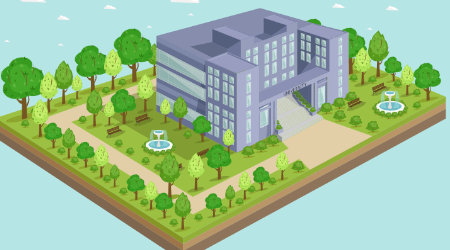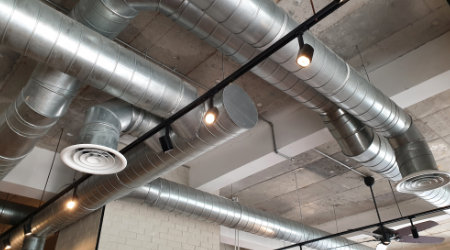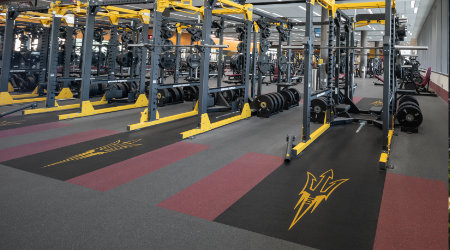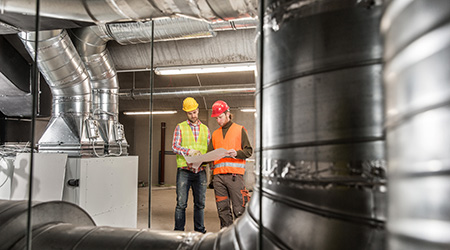
3 Current Trends in Campus Planning
September 17, 2021
By Chris Miller, Assistant Editor, Facility Market
Campus planning for any type of school, whether it be a high school or a university, involves a comprehensive strategic process that identifies a school’s culture, mission, and aspirations. There are many things to consider when building academic spaces that foster the growth of students of all ages. Current trends include interdisciplinary learning, which is trickling down from higher-education and impacting programmatic decisions on independent campuses, along with flexibility and a need for more space devoted to indoor-outdoor learning.
1. Creating appropriate spaces for interdisciplinary and project-based learning is a trend in campus planning. The traditional method of teaching where an educational leader lectures a class that sits down and quietly takes notes is becoming less popular. Today, schools are adopting discussion-based formats where students take more control of their education. School design should reflect this. Spaces where collaboration can easily take place are trending. This might mean developing circular rooms that foster more discussion or having dynamic desk furniture that can be moved easily so groups can be created. Creating spaces that allow students of different disciplines to easily get together to produce something is essential to modern school design.
2. Ease of access to indoor and outdoor learning is a current trend in campus planning, but has always been a big part of a good campus environment, according to architect and campus planner John Kirk, AIA, partner at Cooper, Robertson & Partners. He has designed schools that incorporate green roofs on some of the buildings. These roofs became teaching laboratories with the students maintaining and nurturing them with the aid of faculty. The green roofs are great places for students to be outside and learn about science and sustainability. Incorporating both indoor and outdoor learning spaces has always been a good strategy, but is trending more popularly now than ever likely due to the COVID-19 pandemic. When it comes to having quality outdoor learning environments at a school, cohesion is important. “We’ve always been big proponents of open space frameworks and what we call the public realm in our urban design work and also our campus planning work either for K-12 or higher education,” Kirk said. The quality of a school’s physical environment says a lot about what that school is and whether or not it will produce high-quality students that want to stay there.
3. Flexibility is key when it comes to campus planning, according to Kirk. He believes that an educational space should be able to be dismantled and reconfigured on the fly to support project-based learning. “You might start in a big space with chairs all in a row, and then you break into smaller groups and create your own classroom within a classroom,” he said. Having accessible technology is important today and helps the matter of flexibility. For example, there could be cabling in the ceilings with wires hanging down that have receptacles attached at the end where you can plug technology into them anywhere in the room. Kirk believes that this model of flexibility starts in big business and trickles down to various education levels. “It’s the google model, it’s the apple model, it’s the startup model,” he added.
These three current trends in strategic campus planning help students stay engaged in the classroom. A good campus design can impact a students ability to learn along with attrition at an educational facility. Students want to stay at facilities that will help them succeed in the professional world. A flexible, cohesive, campus that allows for interdisciplinary instruction is what a modern successful campus looks like.
Next
Read next on FacilitiesNet












